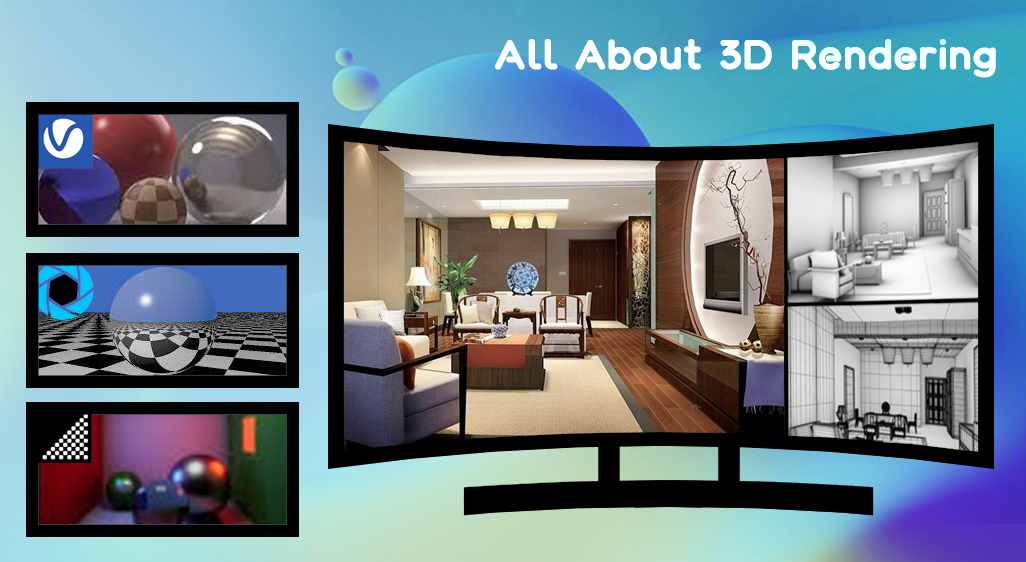Simply described, 3D rendering is the process of generating a 2D image from a digital three-dimensional scene using a computer. Specific methodologies, as well as specialized software and hardware, are used to create an image. As a result, we must grasp that 3D rendering is a process that creates the image.
Types Of 3D Rendering
We can build several types of rendered images, including realistic and non-realistic images. A realistic image could be a photograph-like architectural interior, a product-design image such as a piece of furniture, or an automotive depiction of an automobile. On the other side, we can build a non-realistic graphic with a classic 2D look, such as an outline-type diagram or a cartoon-style image. We can technically visualize everything we can imagine.
What Is The Purpose Of 3d Rendering?
Many industries rely on 3D rendering, including architecture, product design, advertising, video games, and visual effects for film, TV, and animation. Renders enable creative professionals in design and architecture to present their ideas straightforwardly and transparently. Before they are developed or manufactured, they can use a render to evaluate their concepts, experiment with materials, perform studies, and contextualize their designs in the actual world. 3D rendering is critical in the media and entertainment industries for creating story-telling sequences and animations, whether we’re watching an animated movie, a period drama, or an action sequence with explosions, ships from the future, exotic locales, or extraterrestrial creatures.
In many industries, the evolution of computer graphics has supplanted traditional techniques in recent years. Special effects, for example, are being replaced by visual effects, which means stunt drivers are no longer risking their lives in automobile accidents. In advertising, I would venture to guess that 90% or more of vehicle commercials are CG. Many traditional techniques for creating representations, such as scale models, have been replaced in the architecture industry with photorealistic imagery to ensure we can see exactly how something will look once it’s built. Technology has evolved as a result of faster processes, lower prices, and a demand for greater-quality outputs. As hardware is more powerful than ever, the transition to CG was unavoidable.
The Process Of Creating A 3D-Rendered Image?
To create computer-generated graphics and animations, two types of software are used: render engines and game engines. Render engines utilize a technique called ray tracing, whereas gaming engines use rasterization—and some engines combine the two, but we’ll get to that later.
Ray Tracing
Ray tracing creates images by tracing light beams from a camera across a virtual plane of pixels and modelling the impact of their interactions with objects. Different rays must be traced to create the effects. To obtain shadows, for example, certain rays must be traced; to obtain reflections, other rays must be traced, and so on. This method is used to produce photorealistic photographs. When we have to calculate a large number of lights and objects in our scene, the time it takes to render an image increases dramatically. Reflections, refractions, and translucencies, as well as more complicated features like displacement, sub-surface scattering, and instancing, must all be considered by 3D artists.
Rasterization
Another popular method allows us to generate images in a fraction of the time that ray tracing does, but without the realism that ray tracing provides. Rasterization is widely used in gaming engines, and its main advantage is that it provides a real-time experience in which spectators may walk around and interact with the 3D world. Items on the screen are formed through rasterization from a mesh of virtual triangles, which create 3D models of items. In this virtual mesh, the vertices of each triangle meet with the vertices of other triangles of varying forms and sizes. Every vertex gives unique information, and by combining all of this information, the shape of the item is formed. The computer then translates the triangles of the 3D models into pixels on the 2D screen and displays the finished image.
V-Ray
V-Ray is a high-end ray tracing 3D rendering software with production-proven quality, power, speed, and creative flexibility. V-Ray is designed to handle the most complex projects and scenarios. It is deeply integrated with the market’s most popular 3D platforms and provides customers with a streamlined and creative workflow. V-Ray has been used by studios for years to create quality photorealistic images and animations; it has a big user base and is well-known for its versatility. It also won an Academy Sci-Tech Award in 2017 for its work in creating photorealistic pictures for the big screen.
V-Ray-all in one
V-Ray for Architecture, Engineering, and Construction (SketchUp, Rhino, and Revit) blends real-time rendering with ray tracing. V-Ray Vision is a revolutionary raster-based tool that allows users to move about their models, apply materials, and set up lights and cameras—all while viewing their scenes in real time. When they’re ready for photo-quality renderings, they’re simple to make with V-Ray.
The goal of this brief article is to provide basic information on certain fundamentals of V-Ray. Knowledge of these characteristics is critical for any digital artist interested in the subject of rendering. We will be one step ahead if we speak the language and comprehend its context. If you are inspired and passionate, there is an ocean of extra theories and material that you can investigate.












